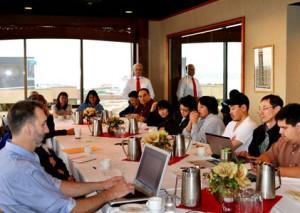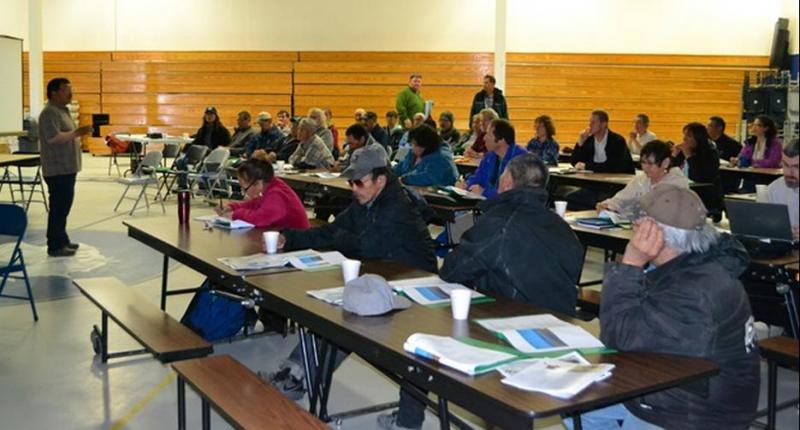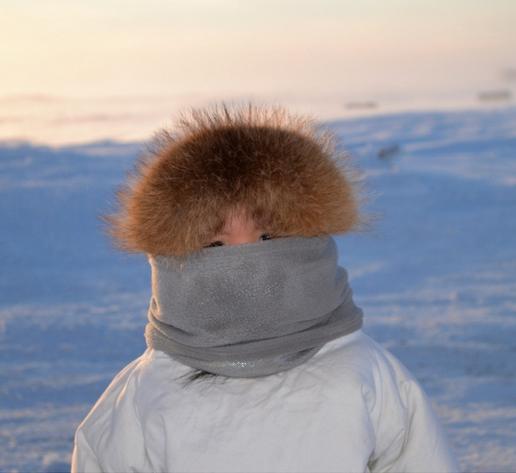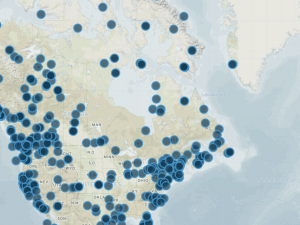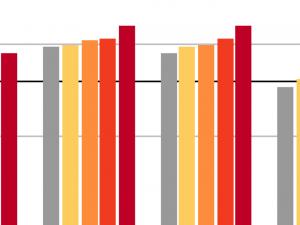Stressors and impacts
Rapid warming in the Arctic is reducing the extent of annual sea ice, especially during the long days of summer. The change to more open water can have negative impacts on traditional hunting practices and ice-adapted marine ecosystems, but the receding ice also increases access for ships and creates new opportunities for offshore development. As trans-Arctic shipping, oil and gas exploration, and tourism increase in the region, the risk to people and ecosystems from oil spills and other drilling and maritime-related accidents increases as well. With new technologies and longer periods of ice-free conditions, mining operations on land are also escalating. Most of these activities bring new risks for industrial accidents to remote areas. These risks are of special concern because many areas don't currently have the infrastructure necessary to protect wildlife or subsistence communities from such accidents.
While the residents of Alaska Native villages face a disproportionately higher risk of having their traditional subsistence lifestyles affected by Arctic development, they also recognize that changes bring new opportunities. Accordingly, leaders of several Alaska Native Village Corporations have stepped up to discuss the potential positive and negative impacts to their region with resource producers and other development groups.
Forming a collective voice
Seven Alaska Native Village Corporations—Gambell, Golovin, Saint Michael, Sitnasuak, Stebbins, Unalakleet, and Wales—have formed a limited liability corporation, the Bering Sea Alliance (BSA), to have a stronger voice in protecting their subsistence way of life when working with other groups such as government agencies and private organizations. Working together through BSA, they aim to engage in dialogue with key stakeholders to protect the rich abundance of their region while striving to enhance their disadvantaged local economies. The group seeks to play a critical role in shaping Arctic development and policy. “Development is going to occur in the Arctic, and we’re going to engage," explains Art Ivanoff, Chief Executive Officer of the Bering Strait Alliance. "We believe we are in a good position to offer logistical support based on our locations.”
Building local capacity
To help Alaska Natives build local capacity to prepare for oil and gas development, BSA holds a variety of training workshops and conferences for these communities. BSA also seeks joint ventures with organizations in the public and private sectors to provide services such as spill-response and rescue operations.
BSA is building effective partnerships through face-to-face meetings among diverse federal, state, and industry stakeholders with community and interest groups. One such meeting was the Arctic Resource Development and Infrastructure Conference, held in the remote Alaska Native Village of Gambell in April 2014. Presentations covered wide-ranging topics, including climate science, Alaska industrial and export development, local Arctic jobs, and environmentally safe operation of terminals and tankers.
Reducing risk through training and advocacy
In the face of increasing risks, Ivanoff believes that disaster can be averted if communities work together to obtain proper training and advocate for themselves. “We need oil response depots and trained personnel in strategic locations to address oil spill issues," he says. "We will continue to work with state and federal agencies and oil producers to be prepared for the development that is going to occur. Just realizing that with such an increase in shipping traffic, there’s potential for an accident to occur, and we want to be prepared."
In November 2014, BSA members and communities participated in a Wildlife Conservation Society workshop called Community Oil Spill Response in Bering and Anadyr Straits (see a link to the Workshop Summary & Recommendations at right, under Additional Resources). During the workshop, seven themes were developed to focus future efforts:
- Secure dedicated funding sources for training, equipment, and infrastructure.
- Ensure meaningful community input into community-specific response plans and associated geographic response strategies.
- Develop and implement training plans for oil spill emergency response in communities.
- Ensure adequate infrastructure, equipment, and logistical resources are available in the region.
- Develop effective communication plans within communities, and between communities, agencies, organizations, and responsible operating bodies.
- Facilitate cross-border communication and cooperation.
- Improve understanding of legal authority, protocols, and roles around subsistence food security
Current BSA efforts to further these goals include developing an Alaska Native oceans and coastal spill response team that is trained and equipped for rapid response, hosting more conferences and workshops with federal, state, and industry representatives to build Bering Strait partnerships and projects, and building capacity at the village level as well as in support of international oceanic spill prevention efforts.

